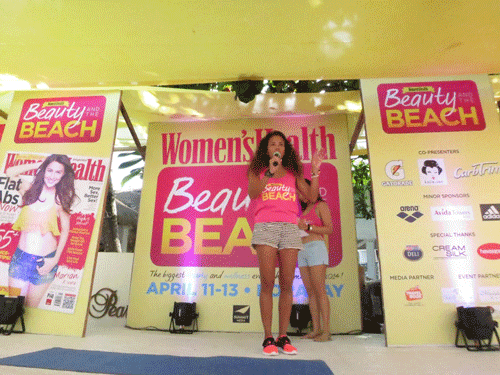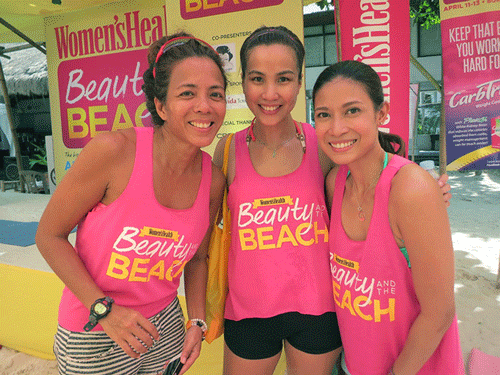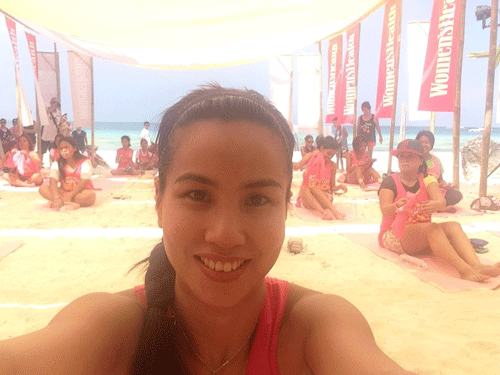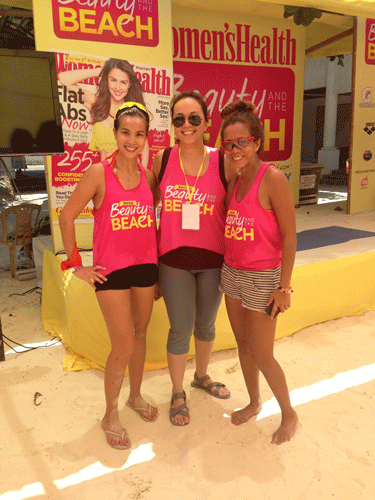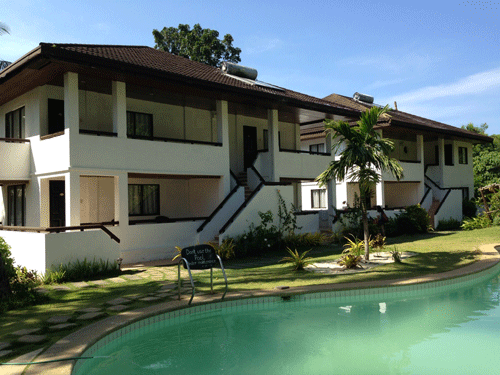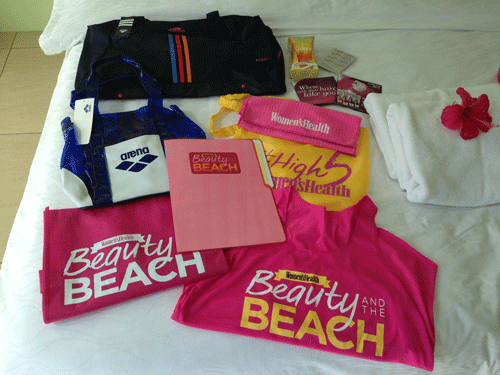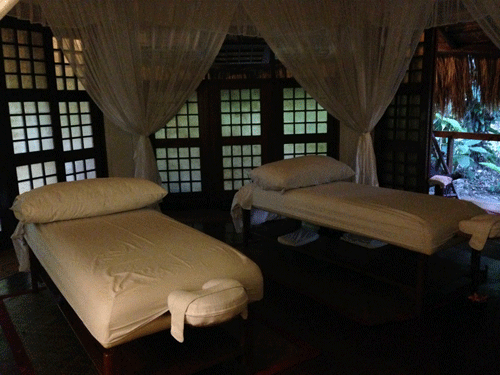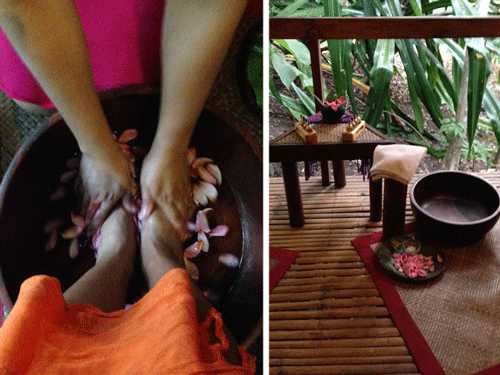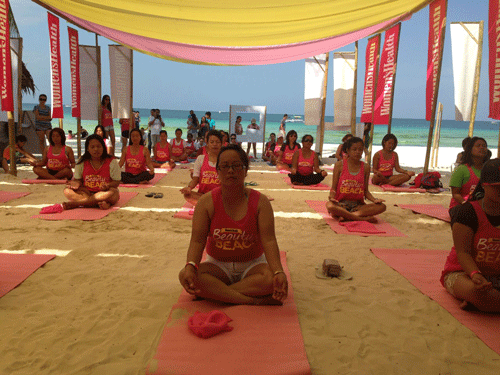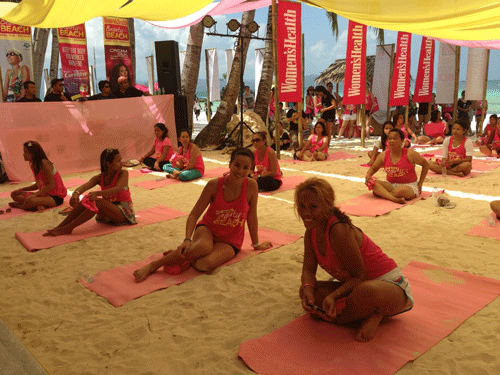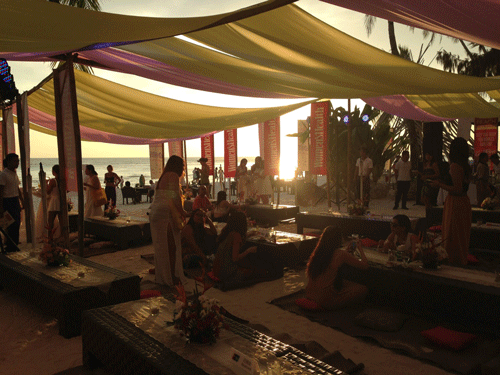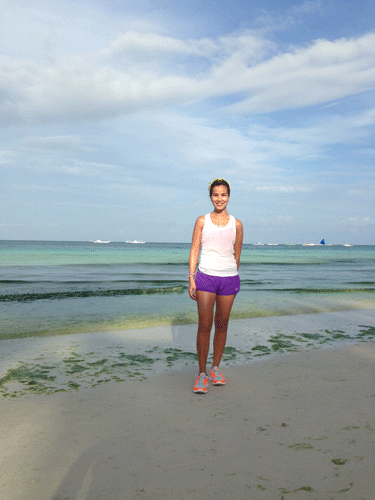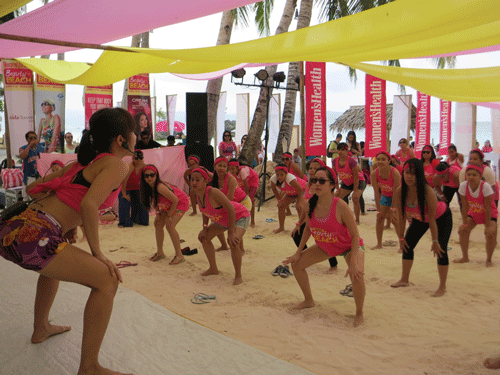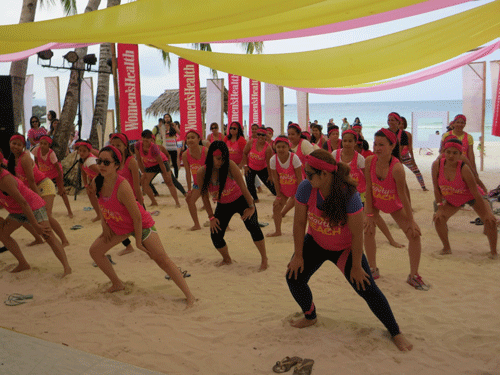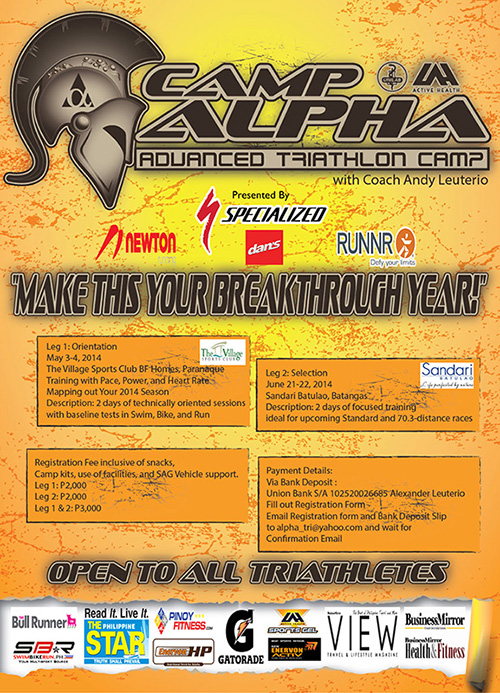How fit are you? How do you determine your fitness level anyway? Dr. Gar Eufemio of Peak Form had the same question and went a step further by developing a series of tests to determine one’s Fitness Quotient. He then launched an event called the Peak Form Fitness Challenge to give everyone the opportunity to determine their Fitness Quotient. Interesting eh? Read about the Fitness Quotient in Dr. Gar’s own words and see below for more info on participating in their event…
WHAT IS YOUR FITNESS QUOTIENT?
FAQs on the FQ
By Edgar Michael T. Eufemio
We have all heard about the intelligence quotient (IQ) and how test scores can be used as predictors of educational attainment, performance at work and income. Various classifications have been used to categorize individuals. With a median score of 100 implying average, you can be considered a genius (140 and above) all the way down to an idiot (24 and below).
In the late 1960’s, the “Stanford Marshmallow Experiment” started the trend toward the creation of the emotional quotient (EQ). Its first published use was in 1987 (Beasley).
What do these tests have in common? They serve as forecasts into life outcomes; like a crystal ball looking into the future…
Having been involved with orthopedic surgery, sports medicine and the sports sciences for the past twenty years, I have yet to encounter an examination that can prophesy who among our young ‘wannabes’ will be the next Manny Pacquiao, Paeng Nepomuceno, Caloy Loyzaga, “Bata” Reyes or Lydia de Vega.
Initially, I was merely planning to come up with an assessment that determines a person’s fitness level; to label someone as superior, above average, average, below average or poor. Then I got to think, “Why not design a trial that can assess not only one’s current condition, but actually narrow down the list of athletes who may, one day, achieve world class status?” A fitness quotient. FQ!
So, together with my partners, friends and staff, we proceeded to formulate the PEAK FORM FITNESS QUOTIENT TEST.
Where do you begin?
The first thing was to determine which components of fitness we wanted to analyze. We came up with ten:
1) Strength
2) Explosiveness
3) Speed
4) Agility
5) Coordination
6) Balance
7) Flexibility
8) Endurance
9) Recovery
10) Mental
topendsports also describes ten factors – eight are similar to ours; the other two are body composition and motor skills. We replaced body composition with recovery. Think about it, should an individual who is very fast and strong be penalized just because he has a high percentage of body fat? We wanted ALL elements to be measurable and “test”-able, and we feel a player’s ability to recuperate quickly is also important. Motor skills can actually fall under coordination so we substituted it with mental – the proficiency to plan and strategize, the capability to maintain composure and the knack of information recall under physical duress.
The next task was to come up with the stations. Since we started out with ten aspects, we decided on ten posts, each with a mean score of ten points. A total of 100 will mean a participant is average. One can score more or less than ten, depending on how they perform in each stop.
What are the characteristics of an ideal fitness test?
1) MEASURES THE DIFFERENT COMPONENTS – The various body parts as well as the multiple facets of fitness must be evaluated by the diverse situations. (“not just counting how many bicep curls you can do in one minute carrying a ten pound dumbbell”).
2) CAN BE STANDARDIZED – Most fitness assessments put the “testees” under the same conditions, regardless of height and weight. We needed to come up with something wherein the tasks are adjusted to everyone’s physical dimensions – the amount to be lifted and the distance to be covered being a fixed percentage of their mass and stature. This levels the playing field. We came up with six categories for each – from 100 to 220 pounds and from 5 feet to 6 feet 8 inches.
3) HAS A SCORING SYSTEM – Your report card does not simply state that “You are fit” or “You are not fit”; it is not a pass or fail thing. Having a numerical grade enables you to determine if you are better, equal or inferior to someone else. If two or more students are told they are the best in their batch, there must be an objective basis (a digit count) for the tie. The more diverse the criteria and the more elaborate and strict the tallying scheme, the less likely that you will have more than one class valedictorian.
4) IS REPRODUCIBLE – If the same investigation will be conducted at an alternate time or place, the methods of assigning points must remain the same. The equipment and the conduct of the trial must be constant. Every single time.
5) CAN COMPARE RESULTS – At any given moment, scores of different people can be matched up against each other. Furthermore, the same personality may be checked again at another period, and there must be an impartial and objective way of determining if conditioning has improved or deteriorated.
6) USES FUNCTIONAL MOVEMENTS – Not everybody can do a chin up. Or jump rope. Are we to say somebody in the pink of health who cannot perform these movements is not in shape? Furthermore, if we ask two contestants to do as many chin ups as they can in one minute, the first challenger tries with all his might but is unable to do one repetition while the second is a ‘couch potato’ who does not even bother to attempt, do they both deserve a zero? We limited our parameters to activities that almost anybody can do – pushing, pulling, throwing, walking, running, jumping, bending and twisting.
7) CAN BE DONE IN A SHORT PERIOD – You want your analysis to take less than an hour.
Other tests have been designed to measure overall fitness. There is the SPARQ Rating System, which stands for Speed, Power, Agility, Reaction and Quickness. There also is the Athletic Standard Index and the RealFit Test. Criticisms are that they either have too many stations (23), too few (3) or use arbitrary formulas to calculate the scores. More importantly, all these tests use the same conditions for everybody, whatever the height or weight. In addition, not all components are tested. We took all of these into consideration when we came up with our challenge.
What are the stations of the Peak Form FQ Test?
1) Vertical Rope Pull – pulling a weight which is a percentage of your body weight over a distance that is a percentage of your height
2) Box Jump – jumping on and going down from a box which is a percentage of your height
3) Suspension Cable Push Up – doing push ups at an angle based on the size of your shoe
4) Balance Board – keeping your balance on a board while moving medicine balls that are a percentage of your body weight alternatingly from both sides, from containers that are a percentage of your height
5) Horizontal Rope Pull – pulling a weight which is a percentage of your body weight over a distance that is a percentage of your height
6) Gang Plank – walking on a plank whose length and width are a percentage of your height while carrying kettlebells that are a percentage of your body weight
7) Sand Bag Throw – throwing sand bags that are a percentage of your body weight
8) Cone Run – placing and taking tennis balls from cones (these are positioned at distances that are a percentage of your height)
9) Sit Up Shot – while lying on a plank (elevated to a percentage of your height), you take medicine balls (that are a percentage of your body weight) from racks positioned at a percentage of your wingspan, doing a sit up and then shooting the balls in receptacles
10) Ball Up, Ball Down – taking medicine balls (that are a percentage of your body weight) up and down platforms that are positioned on the floor and at your shoulder level
We designed it to be like a move-system type examination in anatomy class; similar to speed-dating. Our subjects will occupy a place each and will move to the next location until they accomplish all ten. Each of the ten activities takes one minute. Then there will be two minutes in between – for the group to rest and the marshals to prepare the items for the next competitor and calculate the totals. So that is twenty-eight minutes for every ten contenders. We had to draw up each situation to be equally taxing so that it should not matter where one starts.
To make it trickier, the stations are laid out such that they are not beside each other. After being briefed, the participants are given time to walk through the course so they can try them out, attempt to remember the locations and to strategize how to approach the challenge and pace themselves.
What is the basis for the scoring system?
A pre-test was done and the highest and the lowest 25% of scores per station were eliminated. The mean of the remaining 50% was then obtained (we kept tabs of the top and bottom numbers of the surviving 50%). Point equivalents based on the above figures are then added or subtracted for each repetition above or below the mean.
The participant with the highest total score is crowned the fittest athlete, similar to being the valedictorian. The top marks per station AND component will also be noted, like being best in Math or English.
Once all the figures are in, we will be able to classify them into categories ranging from ay-dol (meaning elite), astig (superior), hanep (above average), puwede na (average), pasang awa (below average), lampa (poor) or buhay ka pa? (idiot, oops I mean very poor).
Why do we need to come up with an FQ test?
1) At the very least, individuals may check their fitness levels before and after starting an exercise schedule.
2) Different workout routines can now be pitted head-to-head to settle, once and for all, who can produce the best results.
Since we will be able to identify which components are tested by each station:
3) We can now start asking who scored well in explosiveness, agility, coordination or balance. Certainly, there are sports and events that have positions that need those elements highlighted.
The data can benefit the country’s sports development program. We just have to monitor as many athletes as possible to have significant results. All the high school and college students screened will be followed throughout their athletic careers. Some will reach crème de la crème status. Others will excel at certain aspects of their sport (for example – best rebounder in basketball or hardest hitter in boxing or most accurate kicker in soccer).
4) We can backtrack and find out which stations they excelled in and determine if there are any trends. They can now truly serve as prognosticators for what is yet to come.
5) Grade School and High School students who perform well in this test may now be placed in a training pool where more specialized training will be made available to them.
Too many prospects have slipped through the cracks. We may be grooming the wrong players for a particular sport. We could be missing out on the ‘next-big-thing’…
________________________________________________________________________
Peak Form invites everyone to join its Peak Form Fitness Challenge. Peak Form says this is not a marketing event, but a long term project. They intend to come out with a standardized FITNESS QUOTIENT (FQ) that can be used to measure the fitness level of an athlete. If you would like to determine your own FQ, you may want to participate in this:
Event: PEAK FORM FITNESS CHALLENGE
Date/ Time: 18 May 2014 Sunday, 8am to 10pm
Venue: Atrium, Upper Ground Level, Fisher Mall, Quezon Ave., Quezon City
Who can join: Open to the public!
Registration Fee: P1,500 (includes shirt, water bottle and sling bag and FQ Certificate)
Where to Register: All Chris Sports outlets
Past FQ Events: All past FQ’s were by invitation only. The past three invitationals were all held at Xavier School, Greenhills and attended by celebrity athletes, varsity students of XS, and coaches of XS. This time they are opening the opportunity to the public.
For inquiries regarding the Peak Form Fitness Challenge, please call (+632) 478-9408 or (+63) 916 353-4485. You may also get in touch with Dr. Gar at (+632) 726-1696 or (+63) 917 813-5740.
PEAK FORM CONTACT DETAILS
Facebook Page: https://www.facebook.com/peakformmanila
Twitter: https://twitter.com/PeakFormManila
Address: Unit 807, Infinity Bldg., 26th Avenue, Bonifacio Global City, Taguig
Telephone +63.2.478.9408
